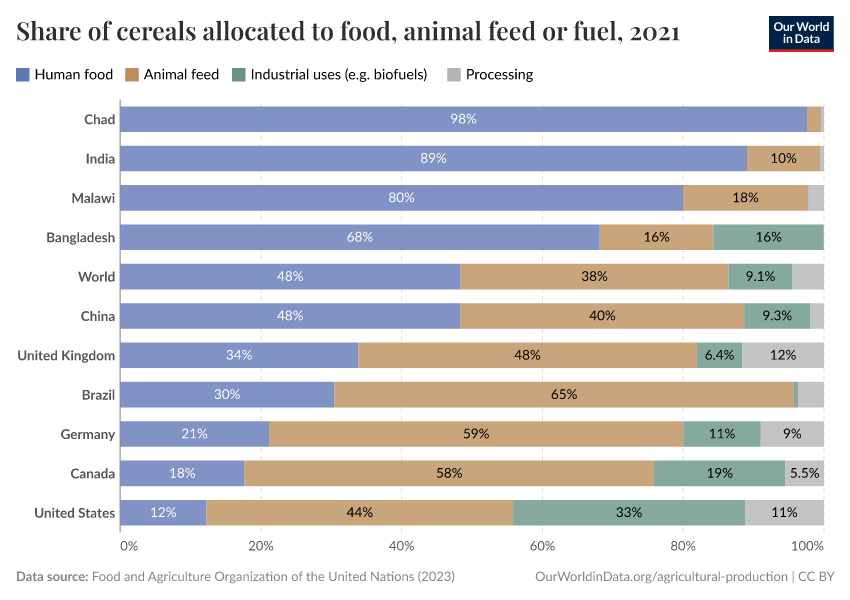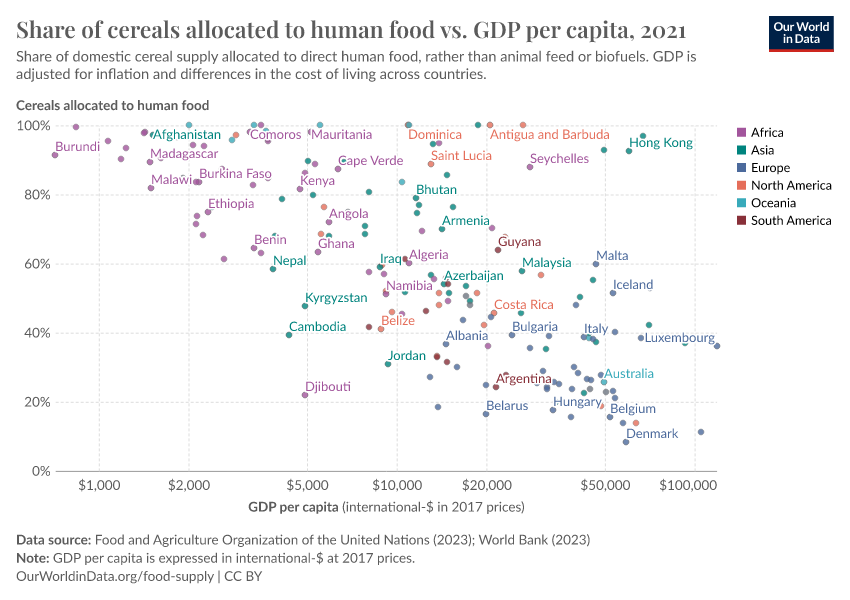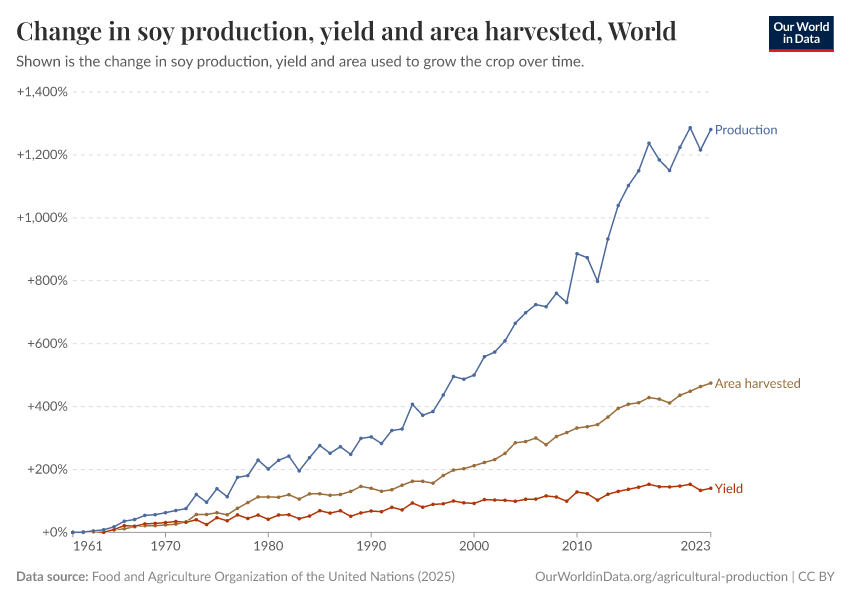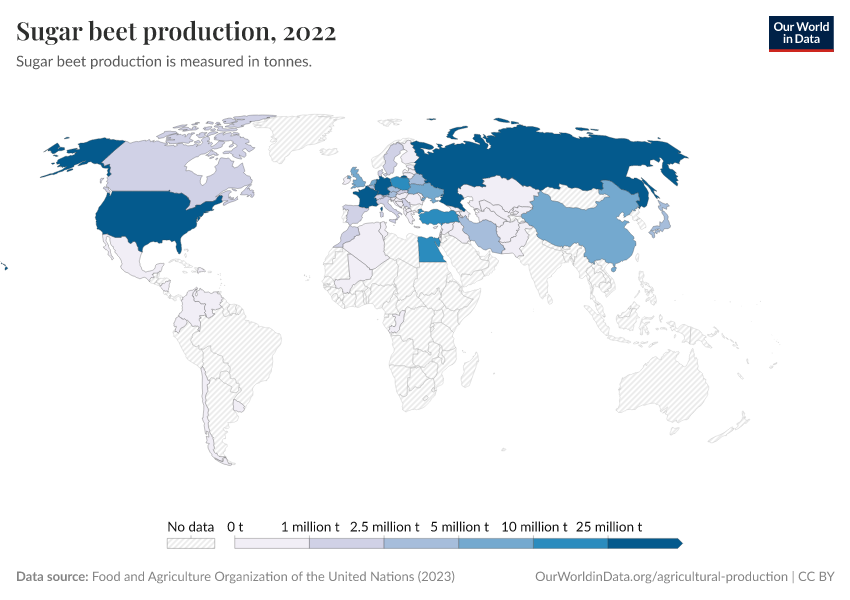Agricultural Production
How much, and what types of food, do countries produce across the world?
Agricultural production is not only fundamental to improving nutrition, but is also the main source of income for many. Increases in crop production are key to ending hunger, as well as economic and social development.
Global crop production has changed dramatically in recent decades. The amount of food we grow has increased rapidly as a result of two drivers: the amount of land we use for agriculture has expanded, but the largest driver has been a rapid rise in crop yields.
The diversity of diets has also increased in many countries around the world. Cereals, roots, and other staple crops once made up the majority of agricultural produce. This has expanded into legumes, fruits, vegetables, nuts, seeds, and other foods.
Agricultural production has also become much more international. Historically, food production was localized everywhere: farmers produced food for their families or communities. Even when food trade became more widespread, it was mostly limited to domestic markets.
Now, large amounts of food are traded internationally. This has made diets across the world much more diverse, and can also provide an important source of income (from 'cash crops') for farmers. This is particularly true in lower-income countries.
Agriculture also has large environmental impacts, which we cover in detail here. Moving forward, we need to find ways of producing food to feed everyone a nutritious diet, while reducing our environmental impacts at the same time.
On this page, you can find data and visualizations relating to agricultural production.
Key Charts on Agricultural Production
See all charts on this topicCite this work
Our articles and data visualizations rely on work from many different people and organizations. When citing this topic page, please also cite the underlying data sources. This topic page can be cited as:
Hannah Ritchie, Pablo Rosado, and Max Roser (2023) - “Agricultural Production” Published online at OurWorldinData.org. Retrieved from: 'https://ourworldindata.org/agricultural-production' [Online Resource]BibTeX citation
@article{owid-agricultural-production,
author = {Hannah Ritchie and Pablo Rosado and Max Roser},
title = {Agricultural Production},
journal = {Our World in Data},
year = {2023},
note = {https://ourworldindata.org/agricultural-production}
}Reuse this work freely
All visualizations, data, and code produced by Our World in Data are completely open access under the Creative Commons BY license. You have the permission to use, distribute, and reproduce these in any medium, provided the source and authors are credited.
The data produced by third parties and made available by Our World in Data is subject to the license terms from the original third-party authors. We will always indicate the original source of the data in our documentation, so you should always check the license of any such third-party data before use and redistribution.
All of our charts can be embedded in any site.


















































